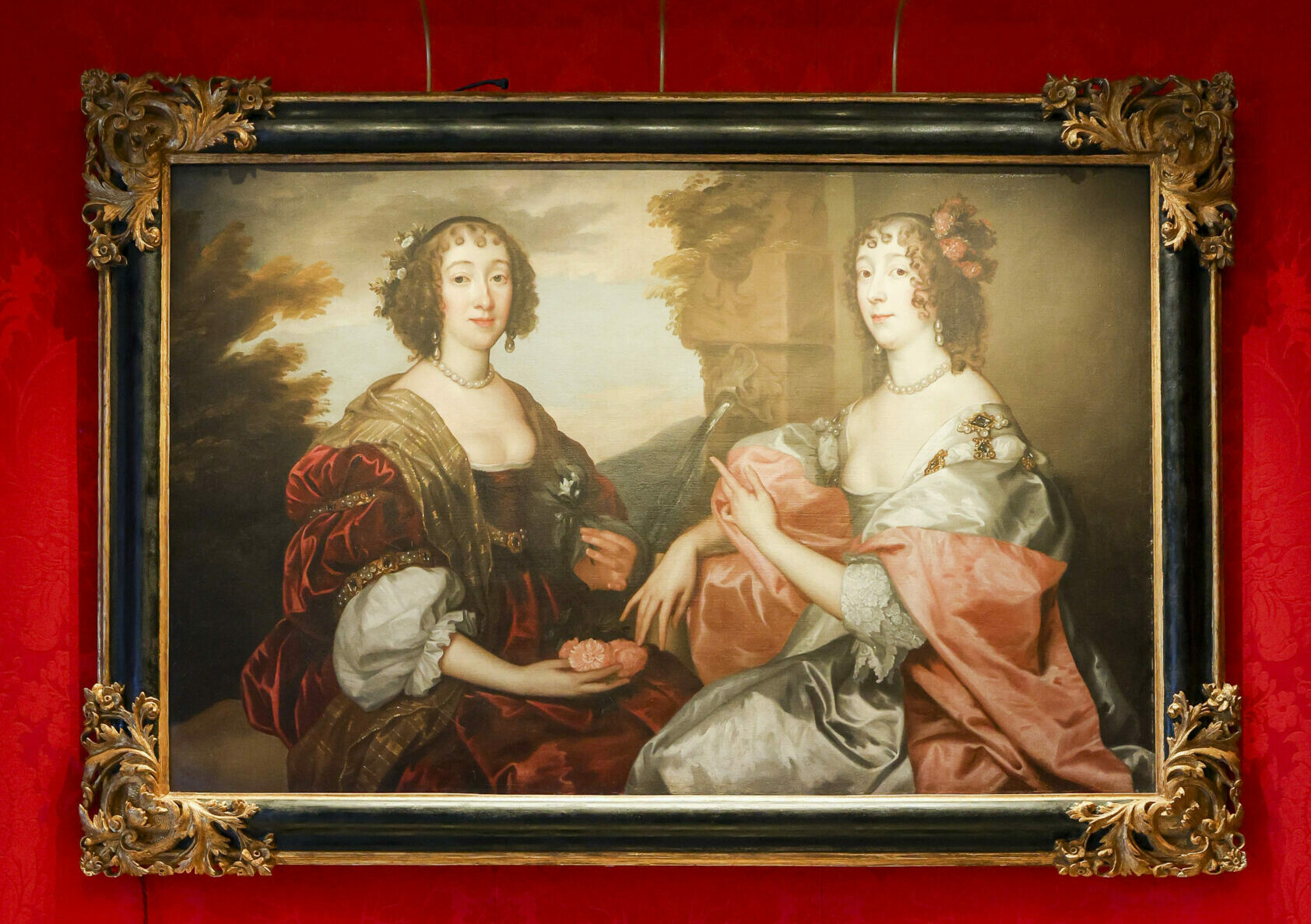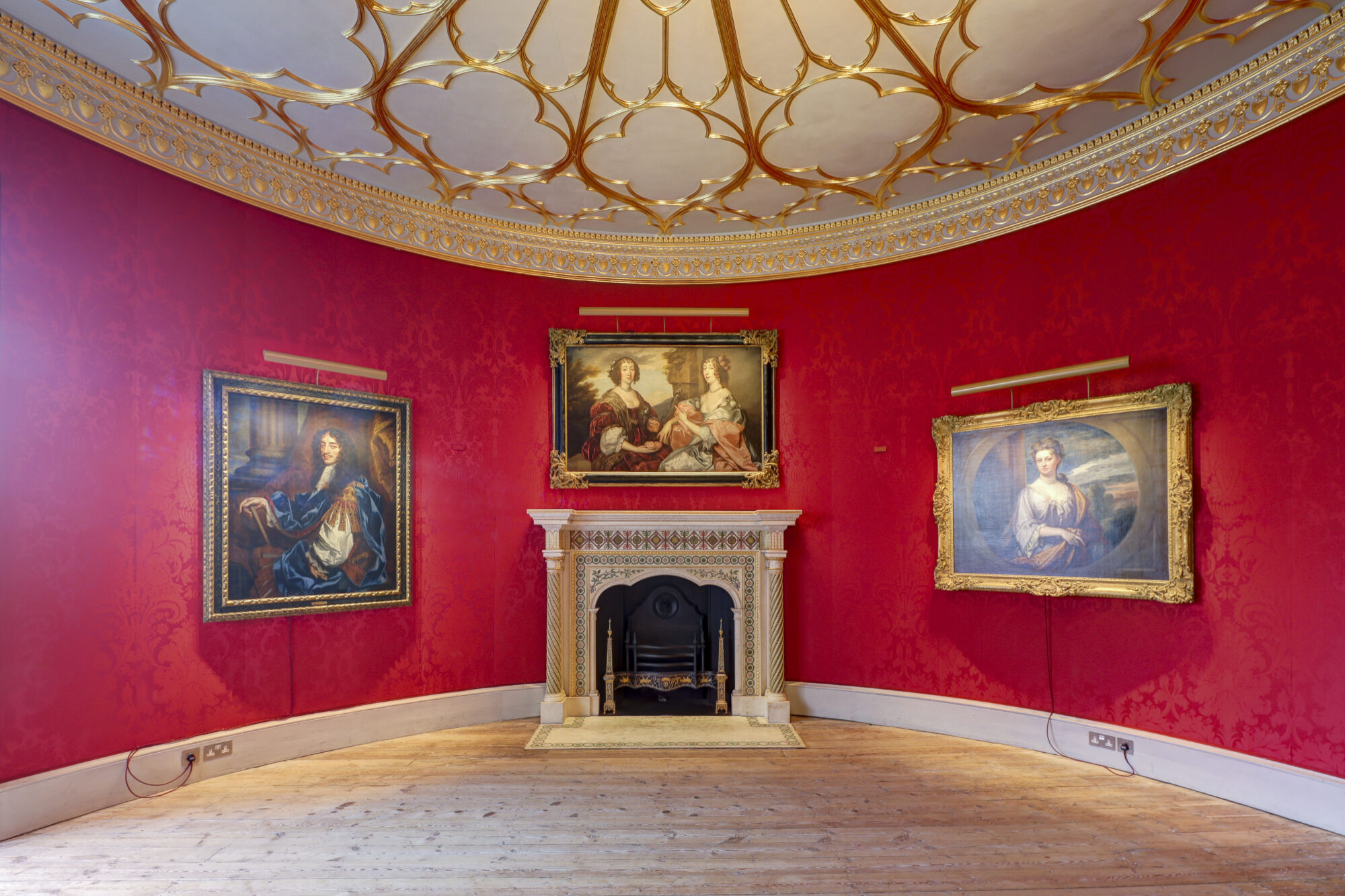Strawberry Hill House is internationally famous as Britain’s finest example of Georgian Gothic Revival architecture.
The Percy Sisters revisited
Written by Carole Tucker, Honorary Librarian
Strawberry Hill House was delighted to receive on long term loan the matching Percy Sisters portrait which was displayed in the Lost Treasures exhibition. It was listed by Walpole as among the ‘Principal Curiosities’ of his collection. In 1764, Walpole triumphantly wrote: “I have bought for myself much the best picture in the auction, a fine Van Dyck of the famous Lady Carlisle and her sister Leicester in one piece, it costs me 9 and twenty guineas”. Horace would have been particularly satisfied to acquire this Van Dyck. Although he owned other Van Dycks, this was the jewel of his collection!
The sisters are an interesting pair. Dorothy, Countess of Leicester (1598–1659), [on the left] and Lucy, Countess of Carlisle (1599–1660), [on the right] were daughters of the 9th Earl of Northumberland. Dorothy was a sombre matron who endured 12 pregnancies and was ambitious for her husband. Lucy was a lively widow and ambitious on her own behalf. She was a renowned wit and beauty and attracted many admirers including several poets – the poet, John Suckling wrote Upon My Lady Carlisle’s Walking in Hampton Court Gardens and another poet, William Cartwright wrote an extravagant Panegyric to the Countess of Carlisle.
Lucy was involved in many political intrigues during the Civil War and switched sides when expedient though, at one point, she was arrested and imprisoned in the Tower. There also is a story that Lucy stole some diamond studs which Anne of Austria, Queen of France, had given to her admirer George Villiers, Duke of Buckingham. Lucy’s motives were reputed to be revenge for having been jilted by Buckingham, who was her one-time lover, but now obsessed with the Queen. The King of France then wanted to see the studs and somehow the Queen was able to recover them. Alexandre Dumas later used this story and probably based the femme fatale, Milady de Winter, on Lucy Carlisle in his novel The Three Musketeers.
The portrait was probably painted c.1638 for Lady Dorothy or her husband whom she joined at His Embassy in Paris in 1639. So, what is going on in the painting?
One explanation suggests that the two sisters, whose relationship was never very easy, are united by the absence of their husbands. Lucy’s husband had died in March 1636 leaving her a wealthy widow. Dorothy’s husband, Robert Sydney, Earl of Leicester, had left England that year to serve as French ambassador leaving Dorothy facing debt from his extravagant spending abroad. It has been rather fancifully suggested that the flowing water which Lucy is pointing at signifies their tears for their absent husbands.
But are they united? It is the differences that are interesting. Lucy is in front of a stone wall, Dorothy is in the countryside – court beauty and country wife. Lucy is in silver is looking out and engaging with the viewer while Dorothy is in a ruby red dress, flowers in her lap and hair and appears calm and composed. Lucy never had children, but Dorothy had twelve. The roses in her lap could signify fecundity, in which case the sprig of orange blossom may indicate her married status, but the roses could also be a reference to a much earlier portrait of Dorothy.
The painting is an early example of the double or “friendship” portrait which Van Dyck was largely responsible for introducing to Britain. Van Dyck, the son of a cloth and silk merchant, delighted in painting flowing drapery and tended to use plain but expensive satin and silk to show off his skill and to give the portraits a dateless quality. He was also famous for painting elegant hands which were used to indicate character.
There is another intriguing detail. Lucy’s face appears in two previous portraits by Van Dyck. The seductive sideways glance and the hair style are identical. There is a portrait of Lady Lucy at Petworth which also shows a water feature and flowing water. However, Lady Dorothy’s portrait was possibly the result of a fresh sitting.
The portrait always intended as an over-mantel piece is now hanging over the handsome Adam fireplace in the Round Room.

Portrait of Lady Dorothy Percy, Countess of Leicester, and her Sister Lady Lucy Percy, Countess of Carlisle. Anthony van Dyck Painted c.1638. Private Collection. Photo: Matt Chung
 The Round Room, Strawberry Hill House. Photo: Matt Chung
The Round Room, Strawberry Hill House. Photo: Matt Chung